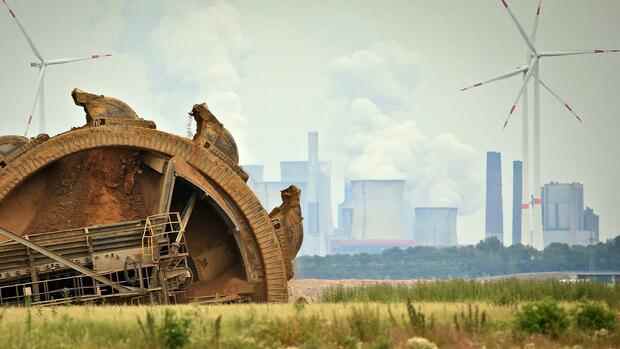An analysis by the Agora Energiewende think tank with the New Economy Forum puts the necessary investments in climate protection alone at 460 billion euros by 2030, of which the federal government will have to make 90 billion euros. In addition, there are 120 billion euros for digitization and education.
Many economists believe that these investments cannot be made within the framework of normal public budgets. The analysis by Agora and the economist Tom Krebs from the Forum New Economy, which is available to the Handelsblatt, makes suggestions as to how investments can be implemented “within the framework of the debt brake and without tax increases”.
To this end, the economists have developed a concept of four instruments that are intended to create direct room for maneuver for the federal government as well as to enable the necessary private and public investments.
Top jobs of the day
Find the best jobs now and
be notified by email.
Public companies should play an important role. The authors suggest that the companies carry out capital increases; the federal government could provide the capital by taking on debt. The advantage: the liabilities would not be relevant for the debt brake because the federal government’s stakes in the respective company are growing. Deutsche Bahn could, for example, implement the investment required for rail expansion and digitization of rail traffic, which amounts to around 50 billion euros.
The federal government could also indirectly promote the expansion of renewable energies by expanding the power grid so that electricity from wind power can be transported from the north to the south. That could swallow up around 200 billion by 2030. In addition, Agora and Krebs propose the establishment of two holding companies at the federal level, which support municipal housing construction and municipal transport companies.
KfW can support the private sector
The fight against climate change will depend above all on private sector investment in carbon-neutral technologies. However, there is concern that many entrepreneurs cannot afford it. So-called difference contracts are intended to solve this dilemma. In doing so, the state would offset the costs of climate investments – which, however, would affect the debt brake.
As an alternative, the study suggests low-interest loans with long terms and repayment grants that the state-owned KfW bank could grant. That would burden the federal budget by 25 billion euros less by 2030. The analysis also shows that a major financing requirement can be covered by planned subsidies and the reduction of climate-damaging subsidies.
However, all costs could not be kept away from the state budget. The additional leeway of 160 billion euros by 2025 from higher tax revenues, which the Handelsblatt had reported, should not be sufficient. This is particularly due to the precarious situation of the social security systems. Due to the aging of society, more and more tax money has to flow into the statutory insurance pots.
More hamsters in the corona crisis
Agora and Krebs propose to use the corona emergency situation. In 2022, the debt brake will be suspended again due to the pandemic. The idea: The state could then go into high debt again in order to build up a reserve and draw on it in the years to come. Constitutional lawyers, however, consider this approach questionable. According to the emergency clause of the debt brake, the federal government may only take out loans for expenses that mitigate the consequences of the emergency, in this case the corona crisis.
It is doubtful whether climate investments, for example, would serve this purpose. This could be easier to justify given the additional expenditure in the social security systems. Short-time working and unemployment benefits resulted in 28 billion euros in additional spending in 2020. Another option is a small reform of the debt brake.
Big changes are unrealistic, it would take a two-thirds majority. What could be changed with a simple majority, however, is what is known as the cyclical component. It helps to decide how much debt leeway the federal government has, depending on the economic situation. The determination of this margin has long been the subject of criticism. It is a theoretical construct that is based on estimates for growth.
With the current method, the federal government’s borrowing will be restricted by a total of 6.8 billion euros from 2023 to 2025, according to current estimates. Political measures such as the introduction of the minimum wage are not directly included in the calculation.
Agora and Krebs think this is a mistake and call for political measures to be included. That would bring ten billion euros of additional leeway each year. The think tank “Department Future” has made a similar proposal. This reform proposal goes even further and would allow around 20 billion euros more leeway.
A legal opinion by renowned financial constitution lawyers from the LMU Munich comes to the conclusion that the proposal could be implemented. In addition to the legal question, there is also the economic one. Lars Feld, ex-head of the economy, says: “Converting such a mechanism purely for political motives is Pippi Longstocking economy.”
Other suggestions have also been criticized. FDP leader Christian Lindner had dismissed the creation of a billion-dollar reserve as “dubious”. The ideas for public companies are also viewed with skepticism due to a lack of parliamentary control. But in the end the traffic lights will need money and somehow have to get it. Many in Berlin therefore assume that in the end there will be a mix of the different options.
More: 160 billion euros more income for the state: traffic lights can distribute additional money
